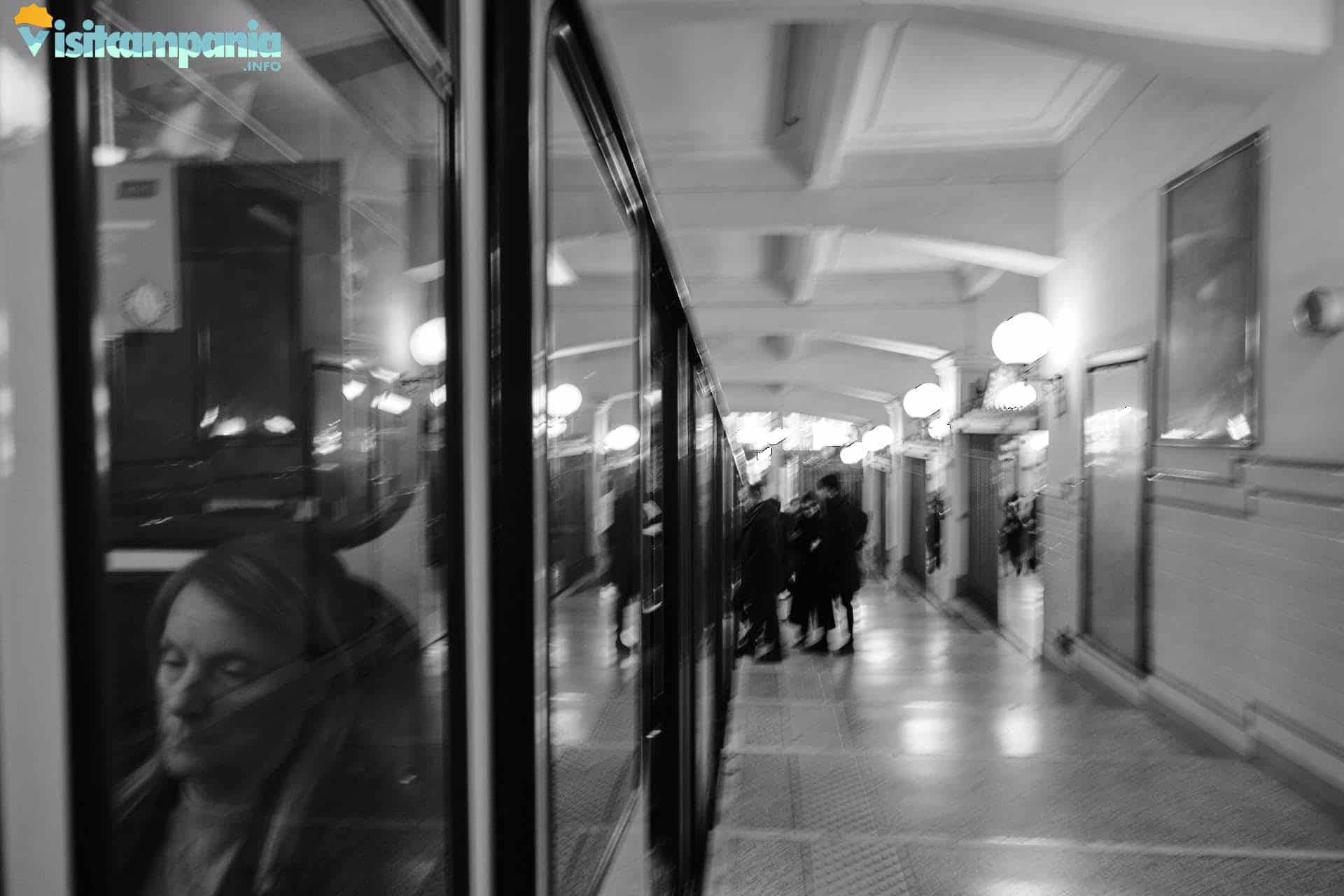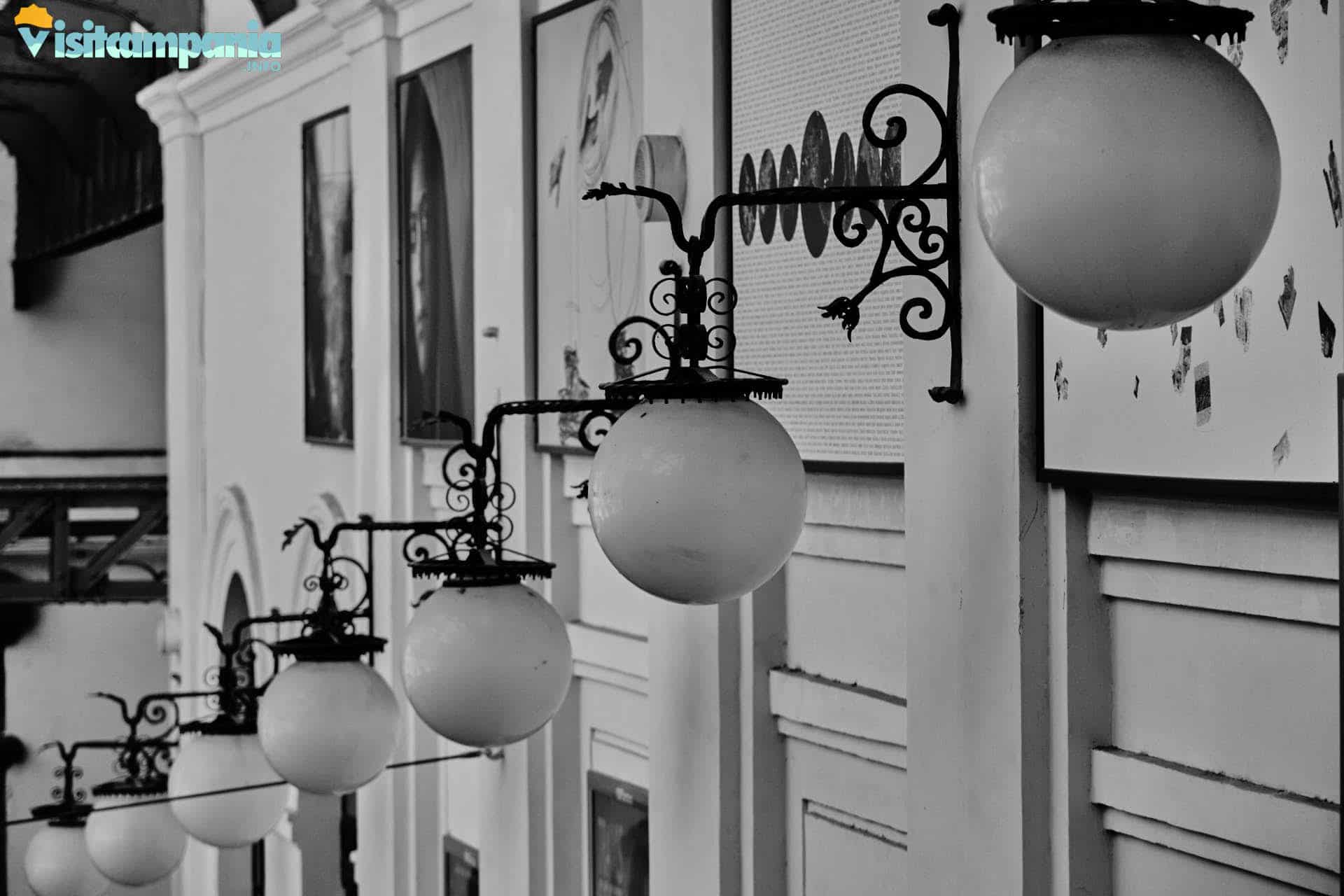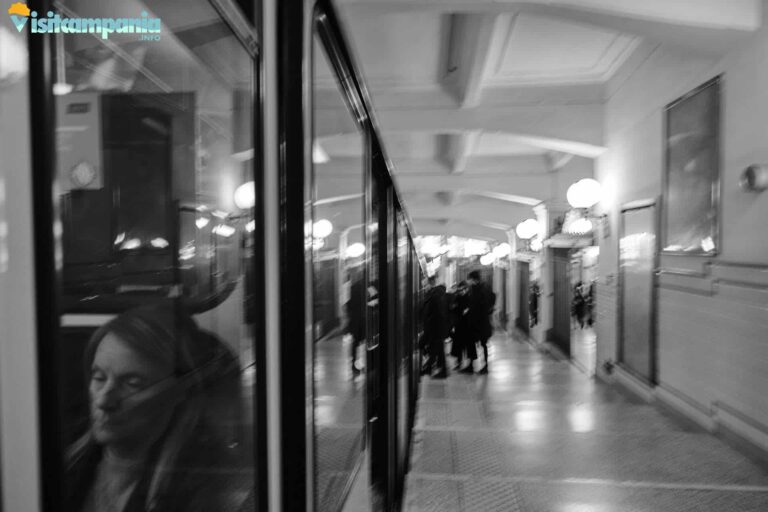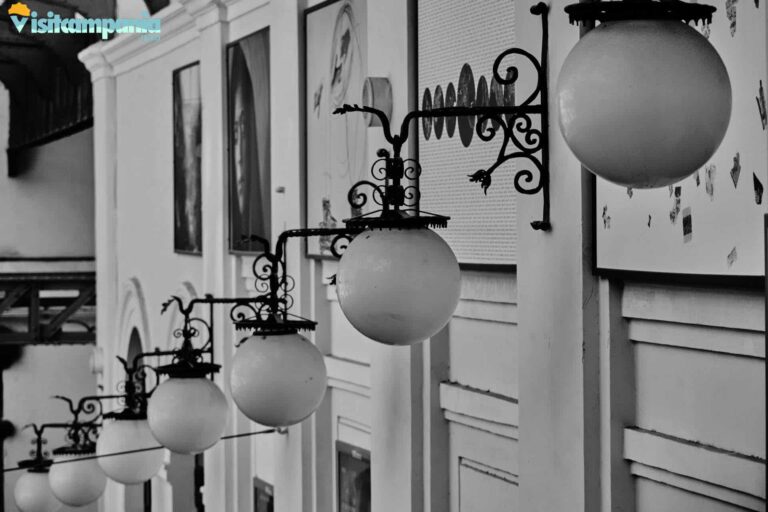Naples vertically: from Toledo street to Vomero with the Central funicular

The Central Funicular of Naples takes its name for its intermediate position between the funiculars of Montesanto and Chiaia. It connectsToledo street with Vomero, places of great tourist importance. In fact, the terminus downstream, Augusteo, is located near important places in the city such as Toledo street, Plebiscito square, Royal Palace, the Umberto I gallery and the Gallerie d’Italia museum. The same can be said for the terminus upstream, Fuga, from which you can easily reach Scarlatti street, the elegant commercial heart of Vomero, Sant’Elmo castle and the San Martino chartreuse. Both are close to metro stations, Toledo and Vanvitelli on line 1 respectively, and other public transport lines.
The construction of the Central funicular was decided by the Municipality of Naples in 1924 and began service in 1928. The track is 1270 meters long and, with an average gradient of 13%, covers a vertical drop of 170 meters.
There are 4 stations. Rising:
- Augusteo, in piazzetta Duca d’Aosta on Toledo street;
- Corso Vittorio Emanuele;
- Petraio, on the homonymous hilly descent;
- Piazza Fuga at Vomero;
Travel times, traveling at an average speed of 7 m / s, vary from about four and a half minutes to almost six, depending on whether the ride is direct or not. In the latter case, the train does not make intermediate stops. The frequency of the races is one every 10 minutes with direct runs at half-hour intervals. The service operates from 7 am to 10 pm every day of the week.
There are two trains and they travel the line in the opposite direction at the same time. Each is composed of three wagons, with a staircase floor to maintain horizontality, and have a capacity of about 450 passengers each.

The movement of the trains, as in all funiculars, takes place by means of a haul rope to which both trains are connected. This system allows you to recover a lot of energy because the weight of the convoy that descends helps the ascent of the other. The track is also called “mixed” because there is only one track in the final stations that doubles in the intermediate stations to allow the crossing of trains. Depending on the direction of travel, they always travel the same branch of the splitting thanks to axles with different wheels.
To make the experience of a trip in the Central funicular of Naples even more evocative there are, then, the extreme stations, Augusteo and Piazza Fuga. In Art Nouveau style, they are true jewels of architecture. In particular, the Piazza Fuga station is very bright. The splendid glass and steel roof brings out the elegance of the decorations and gives you an almost immaterial aura. It also houses an original wagon from 1928.
Another detail to pay attention to concerns the clocks of the funicular. Made by the well-known and luxurious watchmaking Brinkmann of Naples, they are still the original ones.
Over the years, the funicular has undergone various modernization interventions. The first major intervention was in the 70s with the replacement of the original cars. In 1989 the original traction system was replaced. The last intervention dates back, finally, to 2017 and involved the entire funicular with the restyling of the stations, the replacement of the cars and the modernization of all the systems.
Naples by funicular: the most evocative way to visit the city

Said of the Central funicular, two words are needed on the entire funicular system of Naples. With four lines, 16 stations and over 3 kilometers of rail, it is one of the largest and most complex funicular systems in the world.
In fact, given the structure of the Neapolitan territory, made of hills and depressions, the funicular is the ideal means of transport to connect the lower city to the hilly districts.
In addition, the route of the lines follows ancient hilly paths such as that of Petraio, accentuating and enhancing the vertical development of the city of Naples.
Thus, already in 1889, the first funicular of Chiaia was inaugurated, which united, and still unites, the area of Chiaia in the lower city to the elegant hilly district of Vomero.
In 1891 followed the funicular of Montesanto that connects Piazzetta Montesanto always to the Vomero district.
As mentioned, we must, then, wait until 1928 for the inauguration of the Central funicular that connects via Toledo to the usual Vomero.
Finally, in 1931, the Mergellina funicular was born, connecting the seaside district of Mergellina to the rich and panoramic hilly district of Posillipo.
Uphill among the wonders of the world: funiculars as a travel experience and tourist attraction

That said, can a means of public transport such as the Central funicular really be a tourist attraction? Obviously yes and, if I have not yet convinced you, the examples are numerous all over the world.
Only remaining in Campania think of the historic train that connects the central station to the Railway Museum of Pietrarsa or the ferries of the sea metro. If we broaden our gaze, other iconic examples are the red double-decker buses in London or yellow taxis in New York.
Among all possible means of transport, funiculars, i.e. those rail vehicles whose movement is ensured by ropes and which are used to overcome high slopes, certainly have a special place.
Think of the evocative cable-cars of San Francisco, the funicular of Zagreb, just 66 meters long and declared protected cultural heritage, or the romantic elevadors of Lisbon for which there is even a “tourist” ticket more expensive than normal.
All these means, and the Central Funicular of Naples is no exception, allow not only to move quickly but to live real travel experiences in urban contexts that make it real tourist attractions for the joy of the little ones but also, let’s face it, of us older.










